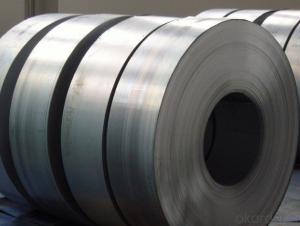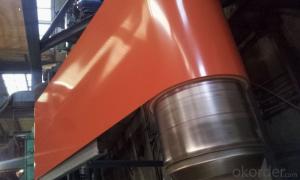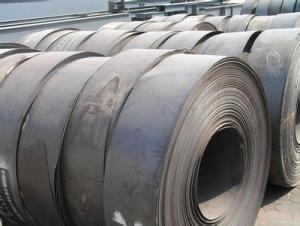Steel Strips Based On The Galvanized Steels
- Loading Port:
- Tianjin
- Payment Terms:
- TT OR LC
- Min Order Qty:
- 25 m.t.
- Supply Capability:
- 10000 m.t./month
OKorder Service Pledge
OKorder Financial Service
You Might Also Like
Steel Strips Based On The Galvanized Steels
1.Structure of Steel Strips Based On The Galvanized Steels
Steel Strips Based On The Galvanized Steels is one kinds of building material on construction. Steel sheet in melting zinc trough, the sticking of a layer of zinc sheet. At present mainly adopts continuous galvanizing process, namely the continuous roll of steel plate in the melt zinc plating tank made of galvanized steel sheet; Alloying of galvanized steel. This kind of steel plate is made by hot dip method, but after the slot, immediately heated to a temperature of about 500 ℃, it make the generation of zinc and iron alloy membrane. This kind of galvanized volumes with good coating of the sex and weldability.
2.Main Features of Steel Strips Based On The Galvanized Steels
| adopt wide hot galvanized strip produced by famous company as Bao Steel which has even thickness |
| we introduce a new complete set of cutting technology |
| keep steady precision |
| reduce waste of material farthest |
| adopt physical technique in order to make the galvanized level thicker |
| enhance the rustproof capability |
| adopt non-chrome passivation technique |
| protect the environment against pollution |
| adopt level pressure technique and inert gases protect technique |
| make the galvanized level brighter |
| delay oxidation phenomenon in natural environment |
3. Steel Strips Based On The Galvanized Steels Images
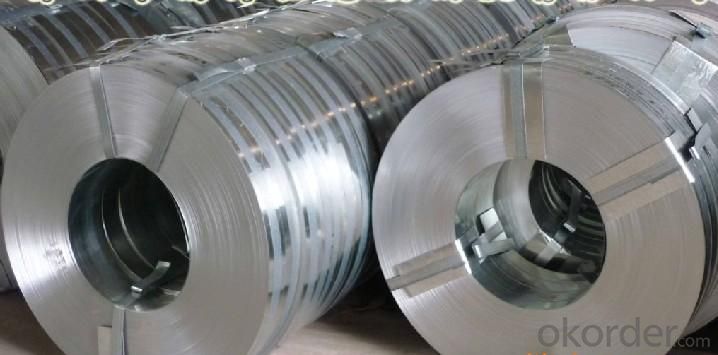
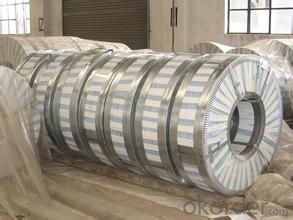
4. Steel Strips Based On The Galvanized Steels Specification
1)Based raw material: Hot rolled steel coils or Cold rolled steel coils
2) Thickness
3) Width
4)Coating mass
5) Spangle
6)Surface treatment
7)Coil inner diameter
8)Painting kind
9)Painting color
10)Painting thickness
5.FAQ of Steel Strips Based On The Galvanized Steels
We have organized several common questions for our clients,may help you sincerely:
①How about your company?
A world class manufacturer & supplier of castings forging in carbon steel and alloy steel,is one of the large-scale professional investment casting production bases in China,consisting of both casting foundry forging and machining factory. Annually more than 8000 tons Precision casting and forging parts are exported to markets in Europe,America and Japan. OEM casting and forging service available according to customer’s requirements.
②How to guarantee the quality of the products?
We have established the international advanced quality management system,every link from raw material to final product we have strict quality test;We resolutely put an end to unqualified products flowing into the market. At the same time, we will provide necessary follow-up service assurance.
③How is the packaging and delivery?
Exporting Package with the steel material cover and the delivery term is based on the project.
- Q:Can steel strips be used in the manufacturing of furniture?
- Yes, steel strips can be used in the manufacturing of furniture. They are commonly used in the construction of metal furniture frames, providing strength, support, and durability. Steel strips are versatile and can be shaped and formed into various designs and structures, making them suitable for a wide range of furniture styles.
- Q:What are the factors that affect the vibration damping properties of steel strips?
- There are several factors that can affect the vibration damping properties of steel strips. These factors include the composition and microstructure of the steel, the thickness and surface finish of the strip, the presence of any coatings or treatments, and the temperature and environmental conditions in which the strip is used. Additionally, the geometry and dimensions of the strip, as well as the type and magnitude of the applied vibration, can also influence its damping properties.
- Q:How do steel strips compare to titanium or aluminum strips?
- Steel strips are generally stronger and more durable than titanium or aluminum strips. They have a higher tensile strength, making them ideal for applications that require resistance to bending or breaking. However, titanium strips offer superior corrosion resistance and are much lighter than steel, while aluminum strips are lighter still but less strong. The choice between steel, titanium, or aluminum strips depends on the specific requirements of the project, such as strength, weight, or corrosion resistance.
- Q:How are steel strips used in the manufacturing of electrical connectors?
- Steel strips are commonly used in the manufacturing of electrical connectors as they provide structural strength and stability to the connectors. These strips are typically shaped and formed into various components such as terminals, pins, and sockets, which are crucial for connecting electrical wires and devices. The steel strips are often coated with materials like nickel or gold to enhance conductivity and prevent corrosion. Overall, steel strips play a vital role in ensuring reliable and efficient electrical connections in various industries.
- Q:Can steel strips be used for making agricultural machinery?
- Yes, steel strips can be used for making agricultural machinery. Steel is a commonly used material in the manufacturing of agricultural machinery due to its strength, durability, and resistance to wear and tear. Steel strips can be shaped, welded, and formed into various components of agricultural machinery such as plows, harrows, cultivators, seeders, and planters. Additionally, steel strips can be galvanized to provide further protection against corrosion, making them suitable for use in outdoor agricultural environments. Overall, steel strips offer the necessary qualities to withstand the demanding conditions and heavy-duty usage typically associated with agricultural machinery.
- Q:What is the impact resistance of a steel strip?
- A steel strip's ability to withstand sudden forces or impacts without breaking or deforming is referred to as its impact resistance. Steel is renowned for its exceptional strength and toughness, making it highly resistant to impact. It has the capacity to absorb and distribute the energy from an impact throughout its structure, preventing the formation of cracks or fractures. The impact resistance of a steel strip can vary depending on several factors, including the steel grade, strip thickness, and alloy composition. Various steel types, such as stainless steel or carbon steel, may exhibit different levels of impact resistance. In order to ensure durability and longevity in various applications, steel strips are generally designed with high impact resistance. This quality makes them suitable for use in industries like construction, automotive, aerospace, and manufacturing, where they may encounter heavy loads, vibrations, or sudden impacts. To determine the impact resistance of a steel strip, different tests like Charpy or Izod impact tests can be performed. These tests involve striking a notched sample of the steel strip with a pendulum or hammer, and measuring the amount of energy absorbed before fracture. Overall, the impact resistance of a steel strip is a crucial characteristic that contributes to its overall strength and reliability in demanding environments.
- Q:How do steel strips contribute to reducing product defects in various applications?
- Steel strips contribute to reducing product defects in various applications by providing a strong and durable material that ensures stability and accuracy during manufacturing processes. The uniformity and consistency of steel strips help to minimize variations in product dimensions and ensure precise cutting and shaping. Additionally, their high tensile strength and resistance to deformation help prevent warping or bending, leading to improved product quality and reduced defects.
- Q:What are the different grades of steel strips?
- There are various grades of steel strips, including low carbon, medium carbon, high carbon, and alloy steel strips. These grades differ in their carbon content, which affects their strength, hardness, and ability to be formed or welded.
- Q:How are steel strips used in the manufacturing of railway tracks?
- The manufacturing of railway tracks relies heavily on steel strips, which serve as a vital component. These strips are essential for establishing a stable and durable foundation for the tracks. Initially, they are utilized to construct the rail bed, which serves as the base upon which the railway tracks are laid. The rail bed consists of compacted soil or stone, fortified by steel strips, ensuring that it remains intact and unyielding against the weight and pressure exerted by passing trains. Once the rail bed is prepared, the steel strips are then employed to form the actual tracks. These strips are specially crafted from high-quality steel, designed to withstand the rigorous demands placed on railway tracks, including heavy loads, extreme temperatures, and continuous wear and tear. Shaped into rails with specific dimensions and profiles, these steel strips facilitate smooth and efficient train movement. To create continuous lengths of rail, the steel strips are connected using various methods, such as welding or mechanical fasteners. These interconnected rails are then carefully positioned on top of the rail bed, ensuring precise alignment and spacing, thereby resulting in a fully functional railway track system. The steel strips provide the necessary strength and rigidity to support the weight of trains and evenly distribute the load across the tracks. Moreover, steel strips also serve additional purposes in the construction of railway tracks, such as reinforcing the sleepers or ties. These sleepers play a crucial role in holding the rails in place and maintaining the correct gauge or distance between the tracks. Steel strips are often embedded or attached to the sleepers, further enhancing their reinforcement and stability. In conclusion, the importance of steel strips in the manufacturing of railway tracks cannot be overstated. Their contributions extend beyond forming the rail bed and creating the rails themselves; they also reinforce the sleepers. With their exceptional strength, durability, and ability to withstand heavy loads, steel strips ensure the safe and efficient movement of trains within the railway network.
- Q:How are steel strips used in the production of wire and cable?
- Steel strips are used in the production of wire and cable as a core material. These strips are typically made of high-quality steel that is strong and durable. The strips are often thin and flat, and they are coiled or wound into a spool. In the manufacturing process, the steel strips are first formed into a specific shape and size. This can be done through various methods such as cold rolling or hot rolling. Cold rolling involves passing the steel strip through a series of rollers at room temperature, while hot rolling involves heating the strip and then passing it through the rollers. This shaping process ensures that the steel strip has the required dimensions and properties for wire and cable production. Once the steel strips are formed, they are typically coated with a layer of corrosion-resistant material. This coating helps protect the steel from moisture and other environmental factors that could cause rust or deterioration. The coating can be made of various materials such as zinc, tin, or polymer-based compounds. The coated steel strips are then used as the core material for wire and cable manufacturing. They are often placed at the center of the wire or cable and provide structural support and strength. The steel strip core helps the wire or cable maintain its shape and resist stretching or breaking under tension. In addition to providing strength, the steel strips also contribute to the electrical conductivity of the wire or cable. Steel is a good conductor of electricity, and having a steel strip core can help improve the overall conductivity of the wire or cable. Overall, steel strips play a crucial role in the production of wire and cable. They provide strength, durability, and electrical conductivity to the final product.
1. Manufacturer Overview |
|
|---|---|
| Location | |
| Year Established | |
| Annual Output Value | |
| Main Markets | |
| Company Certifications | |
2. Manufacturer Certificates |
|
|---|---|
| a) Certification Name | |
| Range | |
| Reference | |
| Validity Period | |
3. Manufacturer Capability |
|
|---|---|
| a)Trade Capacity | |
| Nearest Port | |
| Export Percentage | |
| No.of Employees in Trade Department | |
| Language Spoken: | |
| b)Factory Information | |
| Factory Size: | |
| No. of Production Lines | |
| Contract Manufacturing | |
| Product Price Range | |
Send your message to us
Steel Strips Based On The Galvanized Steels
- Loading Port:
- Tianjin
- Payment Terms:
- TT OR LC
- Min Order Qty:
- 25 m.t.
- Supply Capability:
- 10000 m.t./month
OKorder Service Pledge
OKorder Financial Service
Similar products
New products
Hot products
Related keywords





















